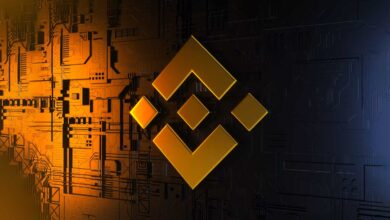What Are Bitcoin Ordinals? What Does It Mean for the Future of Bitcoin?

By tapping into the data storage capabilities of Bitcoin’s SegWit and Taproot upgrades, it has become possible to stuff images, GIFs, and other media files in Bitcoin blocks. The most note-worthy instance of this occurred last week when Luxor Technologies mined what is now considered one of the largest single blocks and transactions ever recorded on the network! This successful mission was executed during the Bitcoin NFT mini-craze surrounding projects like “Bitcoin Ordinals.”
On the other hand, Bitcoin Ordinals Split Bitcoin Community In Two
Articulating memes on Bitcoin has not just split the community, it has also revived a dialogue of growing weight: miner extractable value (MEV) for Bitcoin. By introducing Bitcoin Ordinals—Bitcoin data inscriptions that offer miners an idea of what MEV in their future could look like—it appears as if the landscape is evolving.
Casey Rodarmor ushered in the modern age of Bitcoin NFTs with his ordinals.com inscriptions project, a revolutionary concept that created digital artifacts native to the blockchain without needing any token creation or side chain alterations. From images and audio clips to simple HTML codes like SVGs, JS, and CSS – anything can be an inscription transaction! What’s more, some node operators even inscribed seed phrases directly onto the blockchain!

Spikes in Bitcoin Transaction Fees Are Making People Reconsider
According to Arceris, a secretive Bitcoin researcher, the initial 435 “mistake” NFTs on Bitcoin paid 15.3 million sats in fees and consumed 18.7 million bytes of space–roughly 218 blocks! In only two days’ time, inscriptions drove the average-per-vbyte fee from 1 satoshi to an astounding 15 sats! Dataalways, another anonymous crypto analyst reported that more than 2,000 Bitcoin Ordinals had been generated on Bitcoin so far.
Alex de Vries, a well-known Bitcoin skeptic and self-proclaimed environmentalist, voiced his disapproval of the controversial Bitcoin Ordinals. In an impassioned post on LinkedIn, de Vries made it clear that the carbon footprint from mining Luxor’s infamous block was comparable to taking “a flight from New York to Tokyo and back 446 times.”
So, What Happens Now?
As demand for block space expands and more applications with actual users come into play, blockchain miners can expect growth in revenue size and types. Bitcoin UTXOs are the main contributors responsible for demanding block space. But thanks to Bitcoin Ordinals, we now have a glimpse at what could be an even brighter future, one where other Bitcoin users find inventive ways to request that same limited digital area within blocks – leading them all on a course towards competing within the fee market.
You might interested: Aptos Coin: A Comprehensive Guide to the Cryptocurrency




